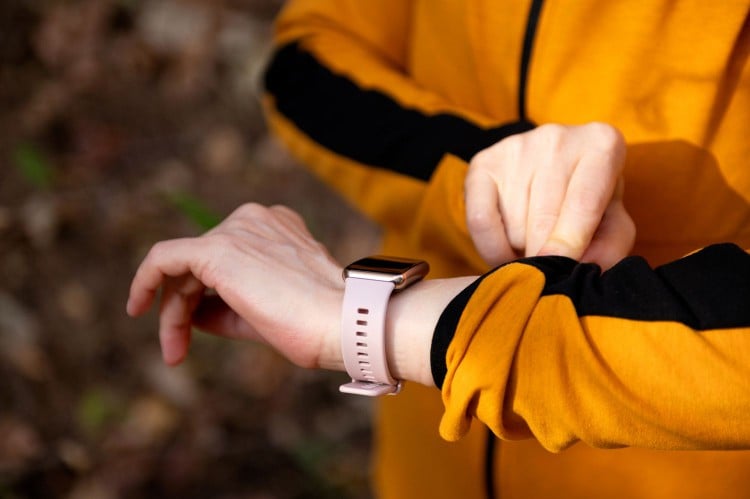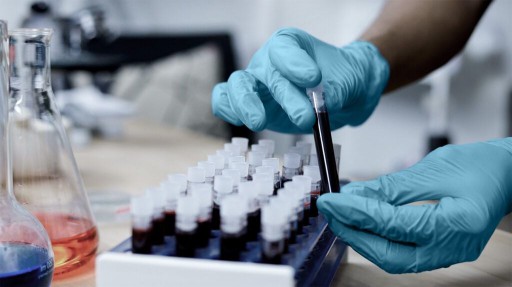- New research shows 95% of wristbands may be harboring potentially harmful bacteria.
- Some wristbands, like ones made from plastic or rubber, were more contaminated than metal wristbands.
- Experts say that people should probably start sanitizing their wristbands more often to help keep themselves and others around them healthy.

Pixel Stories/Stocksy
The watch wristband you wear every day is probably dirtier than you realize, new research suggests.
In a sample of 20 different wristbands—including ones made of plastic, leather, and metal—nearly all of them (95%) were contaminated with potentially harmful bacteria, according to a study published in the journal Advances in Infectious Diseases.
Some wristbands, like the ones made from plastic or rubber, were more contaminated than others.
"Plastic and rubber wristbands may provide a more appropriate environment for bacterial growth as porous and static surfaces tend to attract and be colonized by bacteria," Nwadiuto Esiobu, Ph.D., senior author and a professor of biological sciences at Florida Atlantic University's Charles E. Schmidt College of Science, said in a news release.
Scientists say these findings suggest that people need to start sanitizing these surfaces more often.
"Even at relatively low numbers these pathogens are of public health significance," Esiobu said. "Importantly, the ability of many of these bacteria to significantly affect the health of immunocompromised hosts indicates a special need for health care workers and others in hospital environments to regularly sanitize these surfaces."
Here's what you need to know about the pathogens that can live on these wristbands, the harm they can cause, and how (and when) to effectively clean the materials.
Nearly All Wristbands Contaminated
Though most are worn on a daily basis, wristbands are generally overlooked when it comes to cleaning. That's, in part, why scientists decided to look into various wristband textures to see how likely they are to harbor bacteria.
For the study, researchers tested 20 different wristbands from 20 different people. The wristbands were made of plastic, rubber, cloth, leather, and metal (gold and silver).
In testing each wristband, they were able to look at bacterial counts, the types of bacteria, and their distribution on wristband surfaces. Researchers also screened the effectiveness of three different disinfectant solutions—Lysol, 70% ethanol, and apple cider vinegar—in killing the bacteria.
The bacteria commonly found on the wristbands included types of Staphylococcus, Pseudomonas bacteria—commonly found on the skin—and certain Escherichia bacteria, specifically E. coli, found in the intestines.
Nearly all wristbands (95%) were contaminated with some sort of bacteria; Staphylococcus was found on 85% of wristbands, Pseudomonas was found on 30%, and E. coli bacteria—commonly transmitted through the fecal-oral route—was present on 60% of wristbands.
Factors that mattered the most for wristband bacteria were the material of the wristband and the activity or hygiene of the subject at the time of testing. Generally, rubber, plastic, and even cloth wristbands had the highest bacterial counts; gym-goers also had higher bacterial counts. Metal wristbands had the lowest bacterial counts.
Types of Bacteria on Wristbands
- Staphylococcus: A group of more than 30 types of bacteria. Staph bacteria can cause different types of infections including skin infections (the most common type), bacteremia, and toxic shock syndrome (TSS).
- Pseudomonas: A group of more than 25 types of bacteria that are associated with humans. Pseudomonas aeruginosa, the most common type that affects humans, can cause infections in the blood, lungs (pneumonia), or other body parts after surgery.
- Escherichia: E. coli are bacteria that normally live in the intestines of people and animals. Most are harmless and even helpful; some can cause illness, most commonly diarrhea.
People With Weakened Immune Systems at Greatest Risk
Knowing your watch is harboring bacteria is unsettling, but just because the pathogens detected on wristbands could make you sick, it doesn't mean they will.
Most of the bacteria types found on wristbands already live in the environment, or in (or on) human bodies—it's when those bacteria come into contact with a person with a weakened immune system, or break through the skin barrier, that there may be cause for concern.
“We all have bacteria on us and, most of the time, it does not make you sick,” David Cennimo, MD, associate professor of medicine, adult and pediatric infectious diseases, at the Rutgers New Jersey Medical School, told Health. "[But] if there is a break in the skin, it could become a skin infection.”
The two largest concerns, according to study authors, were the impact of wristband bacteria in a hospital setting—with healthcare workers wearing wristbands while caring for immunocompromised patients—and the potential for facilitating antibiotic resistance.
"Many of these bacteria pose significant threats to the health of immunocompromised patients," study authors wrote.
Additionally, study authors added: "The high prevalence of potential pathogens, some of which could be reservoirs of antibiotic resistance, reveals a weak link in infection control and underscores the need for regular cleaning of personal and hand-held accessories with adequate considerations of their texture."
How to Clean Wristbands
This should be a wakeup call to clean your watch band, Esiobu told Health. “You want to routinely clean it up."
Luckily, researchers looked into that too, and found that Lysol Disinfectant Spray and 70% ethanol were both highly effective, regardless of wristband material, and had a 99.99% kill rate of bacteria within 30 seconds. Both disinfectants had greater efficacy after two minutes.
Apple cider vinegar was also tested as a potential disinfectant, but wasn't as potent, and required a full two minutes to reduce bacteria.
But there's no real guidance on how often you should clean your wristband.
“There’s no rule, but it depends on how busy you are with your hands and whether you’re at the gym,” Esiobu said. “If you sweat a lot, it is not out of place to do a daily cleaning. But if you don’t go running or go to the gym often, maybe you should clean your band once a week."
And while you're busy cleaning your wristbands, you might want to consider wiping down other often-used items, like your earbuds or phones, which should be similarly studied for bacteria, Esiobu said.
“Really anything people wear or regularly contact will be expected to have positive bacterial cultures,” Cennimo said, noting that cell phones may be especially dirty since people often text or surf the web while on the toilet.
But for the most part, for people who are not immunocompromised, the presence of these bacteria on personal items shouldn't be that concerning, said Jamie Alan, PhD, an associate professor of pharmacology and toxicology at Michigan State University, "[Though] it does remind us to sanitize things."
Related pages
Long COVID: Study reveals potential cause of prolonged symptoms
Share on PinterestA study offers new clues on why long COVID persists in some individuals. krisanapo

Stroke: Why Black adults face a higher risk than white adults
Share on PinterestExperts say healthcare inequities have created more serious health issues for Blac

Alzheimer's: The risks of monoclonal antibodies may outweigh benefits
Share on PinterestResearchers have taken a close look at monoclonal antibody treatments for Alzheime

Obesity: Vibrating capsule may help reduce food intake by 40%
Share on PinterestResearchers have developed a vibrating ingestible capsule that may help treat obes

2 Kiwis a Day Can Boost Vitamin C, Replace Supplements
New research found that eating two SunGold kiwis a day for six weeks increased vitamin C intake by 1

COVID Restrictions Reduced Stomach Bugs, Now They May Be Surging Back
Gastrointestinal pathogens, which were largely kept at bay during the early days of the COVID pandem

